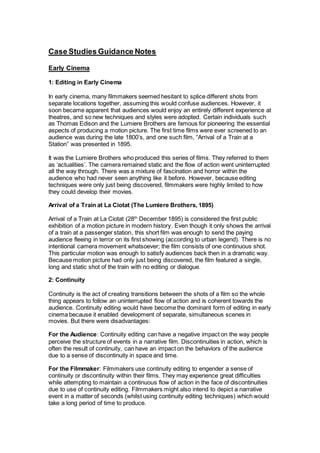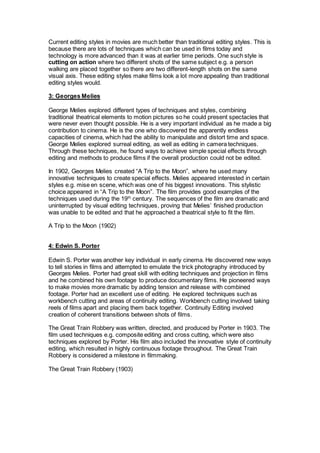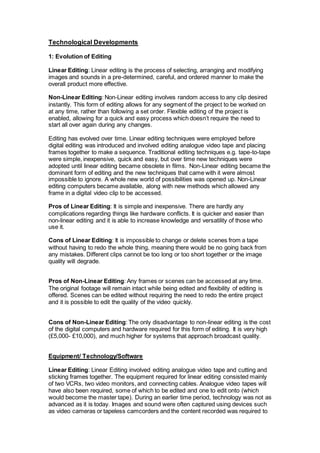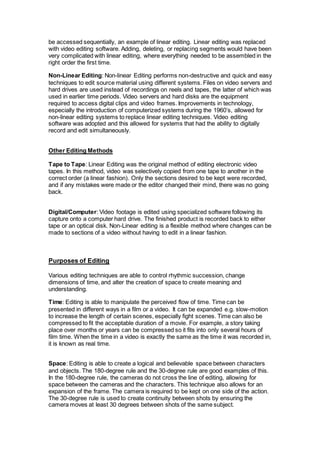The document provides information about editing techniques used in early cinema and their evolution over time. It discusses how editing was limited in early films which typically consisted of single static shots. It then explains how editing evolved with techniques like continuity editing being introduced, allowing scenes to be shot from different angles and locations and edited together coherently. The document also discusses important early filmmakers and their pioneering of techniques like Georges Melies with his exploration of surreal editing. It analyzes some early films and how they employed techniques of the time. Overall, the document traces the history and progression of editing from its limited beginnings to the advanced non-linear digital techniques used today.







